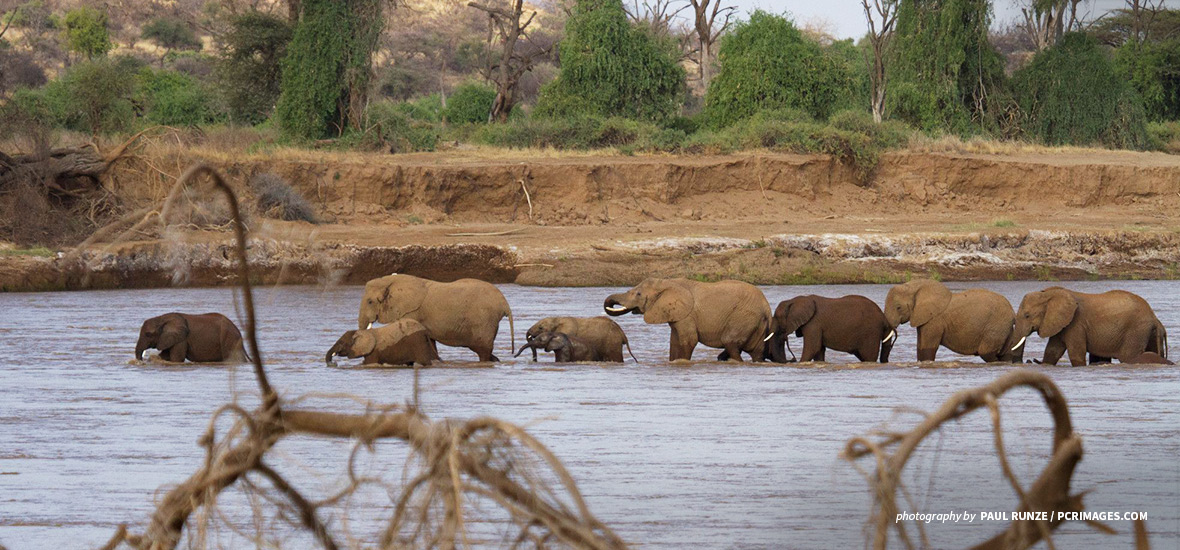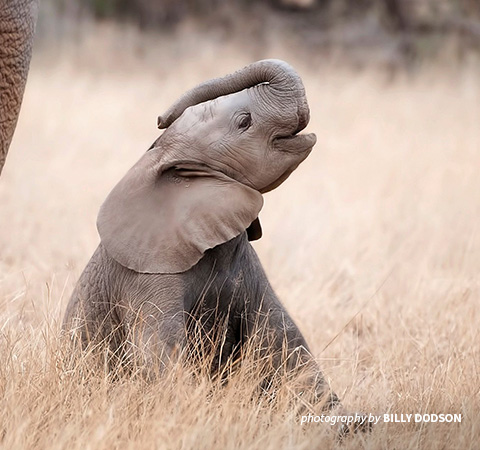Understanding elephant migration: Why do elephants wander?

Since March 2020, the world had been treated to the captivating journey of 15 elephants — six adult females, three adult males, and six juveniles — who wandered over 500 kilometers from their home, a nature reserve called Xishuangbanna in China’s southwestern province of Yunnan.
The elephants, who by September 2021 finally returned home, became an overnight sensation, with people widely sharing photos and videos on social media. Chinese state media also documented the pachyderms’ epic journey thanks to 24/7 live streams and daily updates made possible by a dozen swarming drones.
The elephants encroached on human settlements throughout their unprecedented travels — roaming freely through fields, villages, and large towns, raiding crops, and even breaking into kitchens in search of food. There were also reports of the animals getting drunk on fermented grain. At one point, authorities had to return an adult male who had left the herd to Xishuangbanna because the bull lingered near populated areas and posed a safety risk.
Although captivating, China’s wandering elephants are not necessarily unique: Other wandering animals have captured global attention throughout history. Often, their stories do not end well. (To prevent a bad ending for China's wandering elephants, the frontline team monitoring the animals used food baits to help control the animals and blocked roads leading to cities and towns. They also warned the public against feeding the animals.)
Huberta the hippo and wandering elephant Morgan
One famous case of a wandering animal in Africa happened in the 1930s when a hippopotamus nicknamed Huberta spent three years walking over 1,600 kilometers across South Africa. Huberta evaded capture despite or perhaps because of national and even global attention; sadly, she eventually was killed by farmers near King William’s Town.
Over three weeks in 2016, a male elephant named Morgan made a treacherous 209-kilometer journey from Kenya to conflict-ridden Somalia — just to spend a day before returning home. While the exact reason for his trip is unknown, Save the Elephants founder Iain Douglas Hamilton said he suspected Morgan wanted to find a mate. Morgan’s journey inspired a group of researchers from the University of Twente in the Netherlands, working with Save the Elephants, to study African elephant migratory patterns.
Elephants are night wanderers
African elephants, slightly bigger than Asian elephants, are an endangered species facing multiple threats, including poaching, habitat loss, and human-elephant conflict. Just this year, the International Union for Conservation of Nature listed the African savanna elephant as endangered and the African forest elephant as critically endangered. Previously, the two types of elephants were listed as a single species and categorized as vulnerable.
Research has shown that elephants in Eastern Africa at some point started hiding by day and traveling / foraging at night to avoid the threat of poaching (which often takes place during the day). They have also developed sophisticated sounds, gestures, infrasound, and even chemical secretions to enable them to communicate across distances and stay safe.

African elephants migrate over hundreds of kilometers across their range
How do elephants communicate about threats?
Researchers are not just interested in where the elephants are going but also in the when and how they communicate in their groups. For instance, during Mozambique’s civil war (1977-1992), soldiers ate elephant meat and traded ivory for weapons and ammunition, killing off 90 percent of the 4,000 elephants in the Gorongosa area. More than 25 years later, Gorongosa’s elephants are still afraid of humans. When they encounter people, the older experienced females use various calls to communicate to their families that there is a threat. Depending on the situation, the elephants will charge or flee. Calves and juveniles learn to react from their mothers.
“When people threaten animals, we change their normal behavior, driving them to react defensively or go into attack mode,” says AWF Manager of Species Protection Nathan Gichohi. “For example, in defense, elephants react by bunching together and investigative smelling, and they can then attack or retreat. Many people do not realize the cognitive abilities of animals — that some animals sense danger by recognizing different cues — human voices, certain smells and visual cues,” he says.
Studies have shown African elephants can even differentiate between human languages to identify potential threats. For example, in Kenya’s Amboseli National Park near the Tanzanian border, elephants appear to distinguish between the voices and accents of Maasai warriors who carry spears and the less threatening farmers in the area like the Kamba.
A study by researchers from Oxford University, Save the Elephants, and Disney’s Animal Kingdom established that African elephants make specific alarm calls in response to human threats. In a series of audio experiments, the researchers played voice recordings of a local tribe in Northern Kenya to resting elephants. The elephants quickly reacted, becoming more vigilant and running away from the sound while emitting a distinctive low rumble. When the researchers played recordings of the elephants’ rumblings to another group of elephants, the second group went on the alert and ran away as well.
Elephant calls for safety and survival
Elephants’ unique communication abilities are invaluable to their survival. Aside from trumpeting and rumbling, the animals use several other calls, including barks, roars, snorts, screams, squeals, groans, and cries. They also use jackhammer-like, ear-splitting blasts to signal others to form a protective circle around the family's younger members when there is danger.

Elephants learn how to communicate to evade threats
The most common vocalizations are the aforementioned growling or rumbling noises, which researchers believe are unique in every elephant. These rumbles can create seismic vibrations that the receiving elephants detect through the soft skin on the pads of their feet; at times, they lay their trunks on the ground to detect vibrations in the earth.
Even though researchers have learned so much about the complex ways elephants communicate, they still haven’t distinguished the calls or gestures that warn against poachers. To do so would require them to be near when poachers are present, which would be difficult as well as dangerous.
Thanks to field research, the world will continue to learn more about elephant communication and behavior, broadening and deepening our already exciting base of knowledge about the meanings of elephants’ calls and even understanding what exactly leads elephants to wander as the group did in China this year.
Elephants in China are a protected species, and conservation efforts have doubled their number to over 300 in the last four decades. However, Chinese researchers have said that in the last two decades, elephants have lost 40 percent of their southern Yunnan habitat to commercial development — a different threat than poachers, but an equal if not greater threat.